Food Production systems
Production systems can be defined by their capacity to provide provisioning services (mainly food and fiber). While these systems have internal supporting and regulating services that uphold production services, typically human management involves augmenting these by anthropogenic inputs, e.g. fossil fuel, technology, nutrients, pesticides and antibiotics, which are often fundamental in determining the overall structure, function, and outputs from these systems. However, this is often accomplished at the cost of externalities imposed on other systems, actors and locations (Rist et al. 2014). Furthermore, due to the facilitation of global trade, supporting services in particular can be imported from far-away areas. Thus, the decoupling of local production and the externalities generated by these activities, provide one of the largest challenges facing humanity is to secure the production of food and fiber while avoiding long-term negative impacts on ecosystems and the range of services that they provide. This is particularly true in an increased urbanized world where even the production systems are not generally part of the living experience.
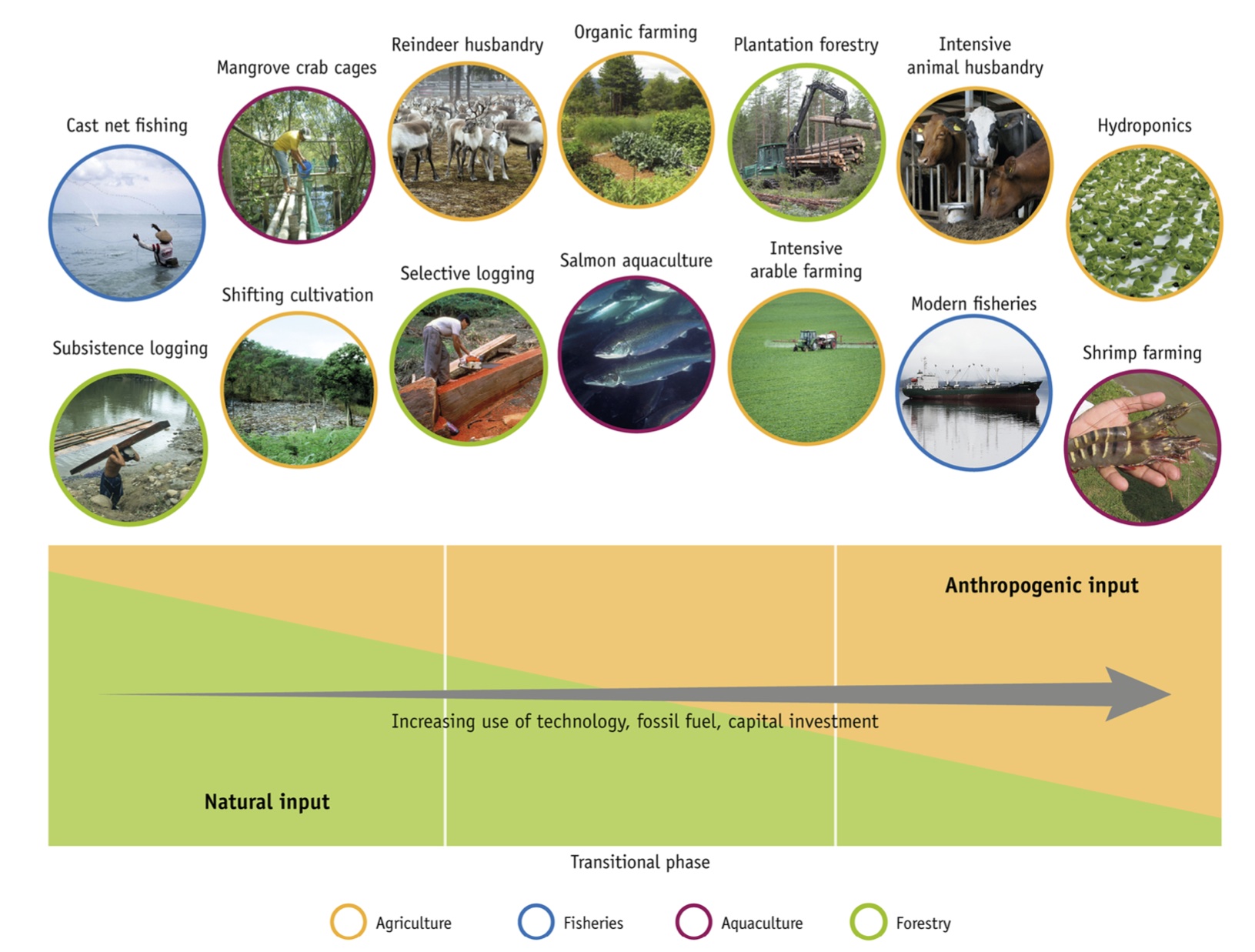
The social-ecological production system
Production systems are social-ecological systems. Often utility from these systems are only counted as the production of the commodity, such as cereal, maize, or farmed fish. However, since the actual production is linked to a larger social-ecological system one needs to look at a broader scale to understand the cost and benefits to society and the different pathways that the system can take. For example, the supporting ecosystem provides alternative food and shelter as well as other services. The use of these alternatives often benefit low income households. Production systems typically have negative impact on the supporting ecosystem, particularly when intensified by anthropogenic input of nutrients and fossil fuel or by reducing biodiversity through monocultures. These externalities need to be incorporated in the whole social utility provided by the larger SES. Furthermore, social aspects, such as mean income and distribution relates to health, security and general wellbeing.
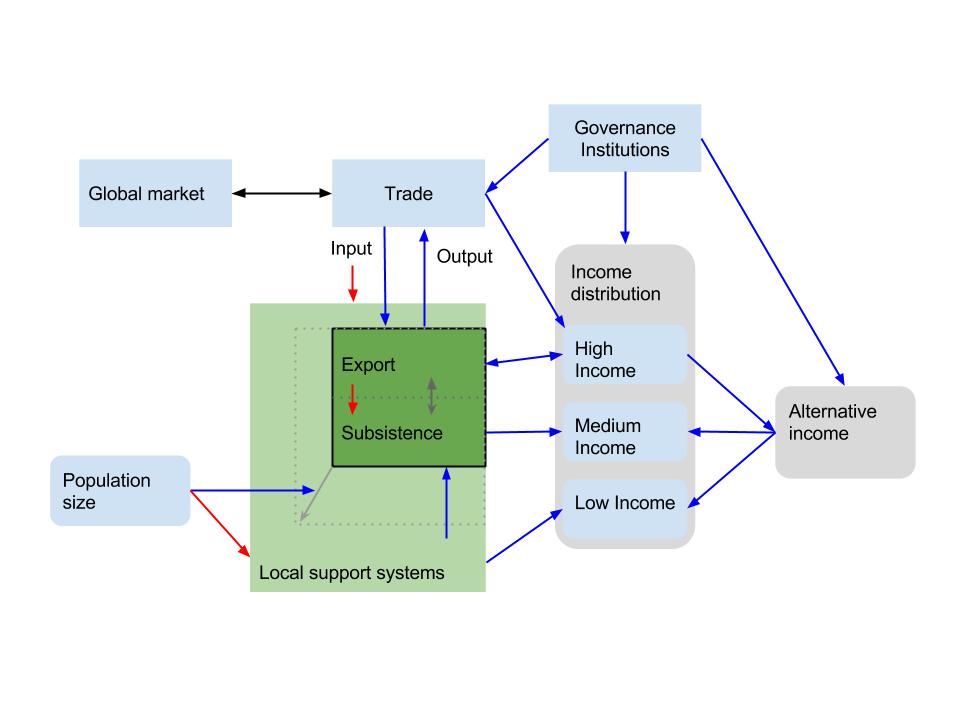
Globalization and trade
While export and trade can provide inflow of capital and, if governed right, can be an important source of food security and a way out of poverty, under some circumstances this capital can also be very unequally distributed and can strengthen a poverty trap.
Furthermore, trade can create perverse incentives that deplete natural capital for a short term benefit. In the picture below, sequential exploitation of sea urchins is shown as it spread over time driven by Asian demand, linking global markets to local systems all over the world. Many regions did not have institutional arrangements to control the harvest of sea urchins, making it easy for tradesmen to provide strong incentives for local fishermen to deplete their own source of potential long term income. Understanding these interactions requires a social-ecological system perspective.
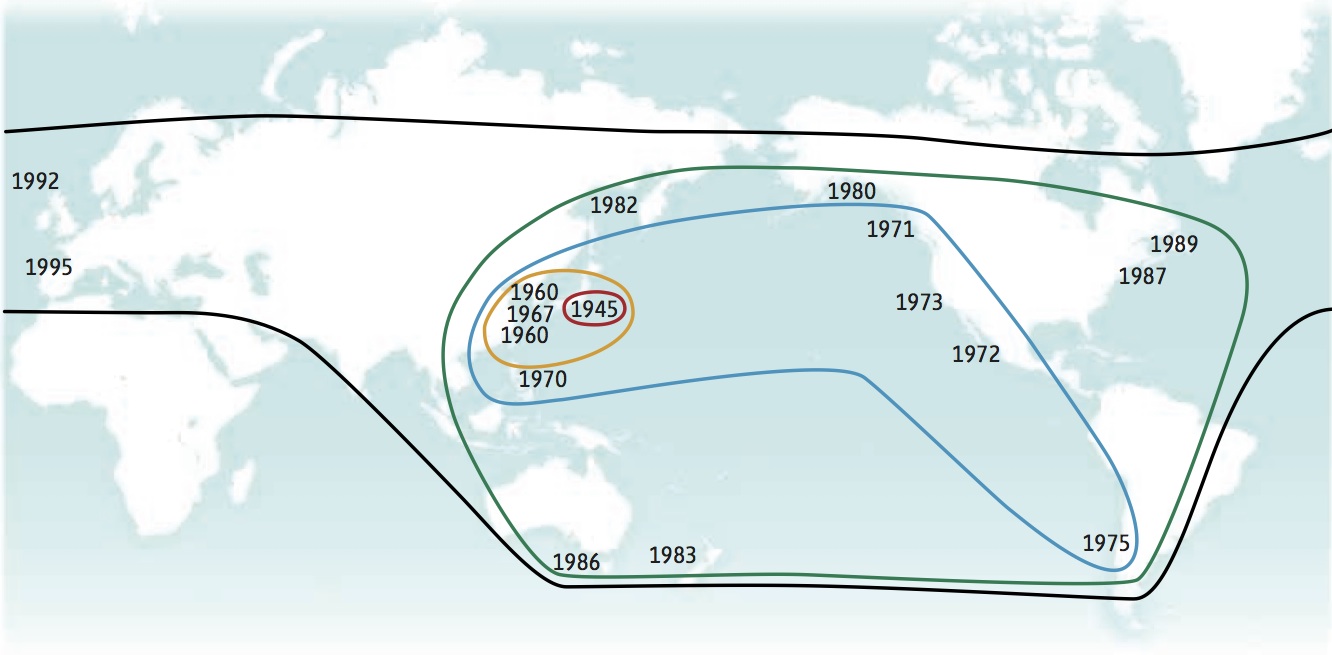
Sub Saharan Agriculture: case Tanzania
Semi-arid and dry sub-humid climate regions cover about 40% of the land surface in Sub-Saharan Africa (SSA) and provide a home for 300 million people. The majority of the population here (60–90%, depending on country) lives in rural landscapes from small-scale farming and livestock keeping. These drylands are among the poorest regions in the world, with absolute poverty levels reaching as high as 40% in some countries. A main challenge for the rural population is the low productivity that current farming systems suffer from. Maize yields still average around 1.5 ton/ha on smallholder farms in SSA, and sorghum just below 1 ton/ha. Partly this has to do with the challenging hydro-climate, which hampers productivity, but it is also a fact that the green revolution that lifted large parts of south Asia from poverty in the 1970s, never really took off in sub-Saharan Africa. As a consequence, although examples of more intensive agriculture exist, most farming systems are still non-mechanized and use very low levels of external inputs.
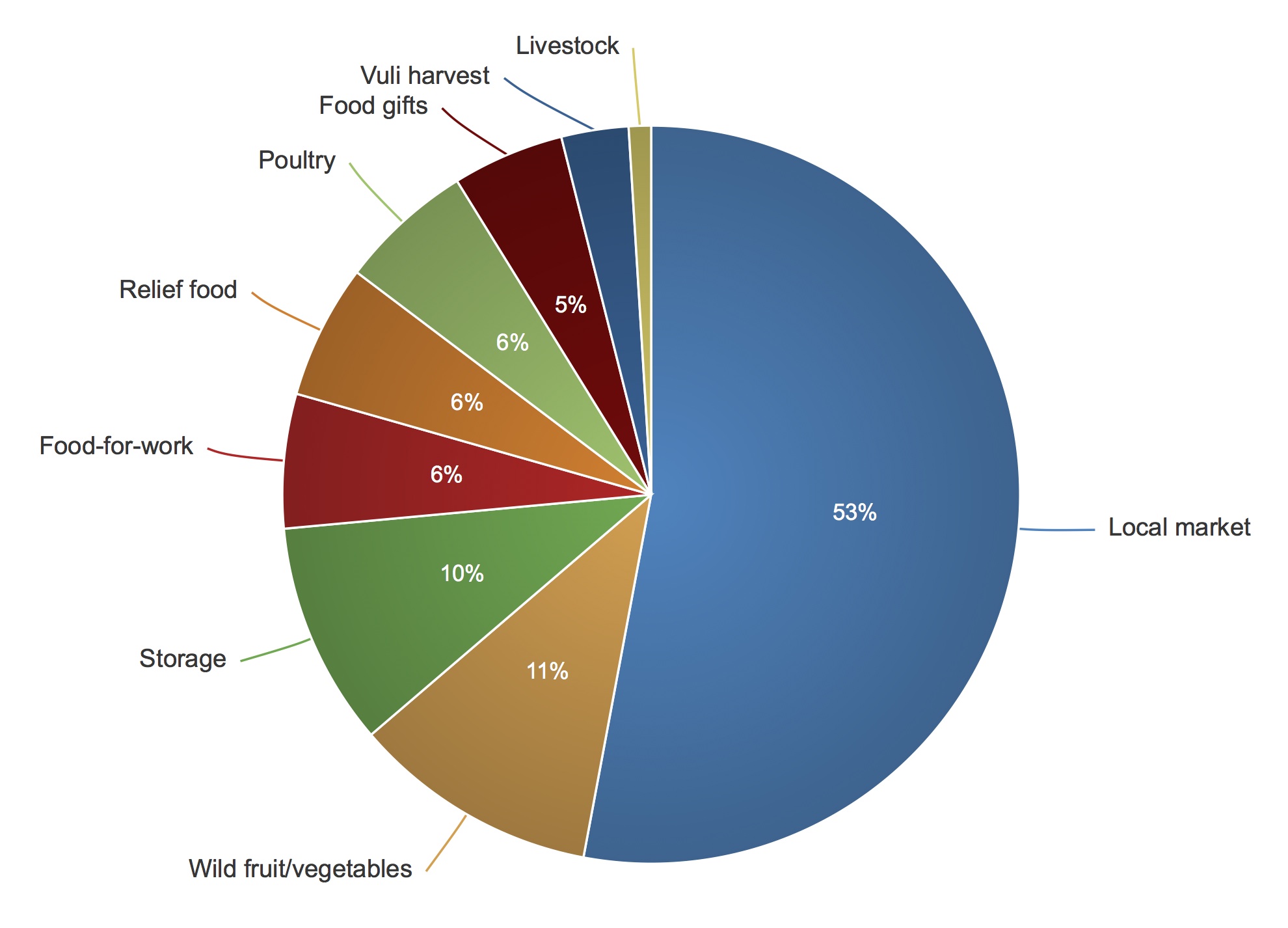
Both due to the risky nature of rainfed farming in dryland regions, and due to the pronounced seasonality of these production systems, smallholders here generally have other food and income sources too (Scoones 1996). To cover basic needs, they rely on a range of local off-farm ecosystem services, such as livestock and dairy production, firewood and construction materials as well as traditional medicines (Millennium Ecosystem Assessment 2005b, WRI 2005). They also earn cash income from small-scale business, wage labor, and remittances. Over the past decade(s) the latter income sources have become increasingly important, today accounting for up to 50% of the incomes (Ellis and Mdoe 2003).
This development is driven both by push factors, such as those related to scarcity of high quality arable land and increasing climate uncertainty, and pull factors, such as market developments and changing ideals. Thus, traditional livelihood systems in semi-arid and dry sub-humid SSA are changing. Given the number of people that still live in rural areas and depend on small-scale farming across these regions, agriculture will likely continue to play an important role within the foreseeable future, but new drivers of change are emerging.
A recent study of small-scale farming in the Makanya catchment, Tanzania, found that the land degradation trajectory experienced there could be explained by the interaction between, on the one hand, three external drivers (increasing dryspell frequency, population growth, and institutional changes) and, on the other hand, a set of key variables within in the agro-ecosystem itself (Enfors 2013). The Makanya catchment is located in a semi-arid region in Northern Tanzania and covers 320 km2. Around 40.000 people live in 15 different villages within the catchment. Small-scale maize farming in combination with cattle keeping is the main livelihood source in this area. Farmers also use the local ecosystem in the catchment for a range of other provisioning ecosystem services, including fodder for livestock, firewood, and construction materials.
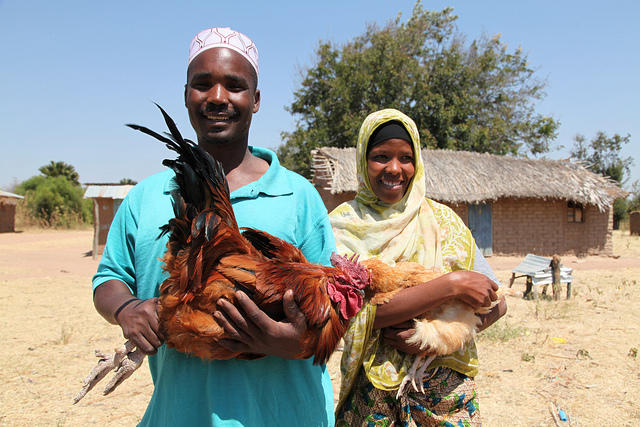
Farmers in Makanya are poor, with an average annual cash income estimated to $150 USD per capita in 2000. The cash income is derived both from various types of off-farm employment, remittances, and from the sale of cash crops. Infrastructure in the catchment is basic, but roads have improved over the past couple of years, and lately, large parts of the catchment have also received cell phone network coverage, signaling that the conditions for smallholder farmers are starting to change.
As the population in Makanya started to grow in the 1960s, farmers abandoned their practice of extended fallows and switched from single to double annual cropping-cycles. Soil fertility declined, which in combination with increasing dry-spell frequency made crop failures more common. To cope, farmers relied on the surrounding landscape for food and income. At the same time as the dependency on these resources grew, however, a series of political changes undermined local institutions for control of common property resources. Without efficient institutions protecting them, crop-complementing resources were rapidly harvested and the capacity of the surrounding ecosystems to support the growing population declined. This forced the use of increasingly extractive farming methods, affecting farm input/outtake ratios with subsequent effects on yield levels and crop failure frequency. The feedback is currently reinforced by what can be described as a climate-related poverty trap. The frequent dry spells and droughts are forcing farmers to deplete the capital they have accumulated every other year. This lowers the capacity for farming system investments, further affecting the on-farm input/outtake ratio. Although higher reliance on non-farm income sources is a factor that case destabilize this feedback, the forces in play seem relatively strong, driving the agro-ecosystem in Makanya along a trajectory where the landscape is being degraded, while yields remain low and people remain poor.
For the farmers in Makanya it is urgent to find a way out of this social-ecological trap, or in other words to find ways to improve the productivity of their farming systems that also contributes to safeguarding productivity beyond field scale. In contrast to past decades’ persistent search for “silver bullets”, these investment need to be broad based, in the sense that they need to be able to target the interacting constraints that keep the system locked in, in a coordinated fashion. Given the many parallel processes of change underway, and thus the large uncertainty about the future, it is important that current investments in small-scale farming are made robust (Enfors et al., 2008). In other words, they have to be able to benefit local communities across a range of potential futures. One way to achieve this would be to combine new agricultural technologies with efforts to enhance the diversity of crops, and promote the use of varieties both intended for household consumption and for the market. Another way to ensure this would be for agricultural intervention programs to increasingly focus on farmer learning, experimentation, and innovation, as this would provide benefits regardless of future development path.
Adapted from: Enfors, E. (2013). Social–ecological traps and transformations in dryland agro-ecosystems: Using water system innovations to change the trajectory of development. Global Environmental Change, 23(1), 51–60. doi:10.1016/j.gloenvcha.2012.10.007
Seafood production: case Aquaculture
In meeting the demand of global protein demand, aquaculture has developed rapidly in the last 20 years and today amounts to 41% of total seafood consumption.
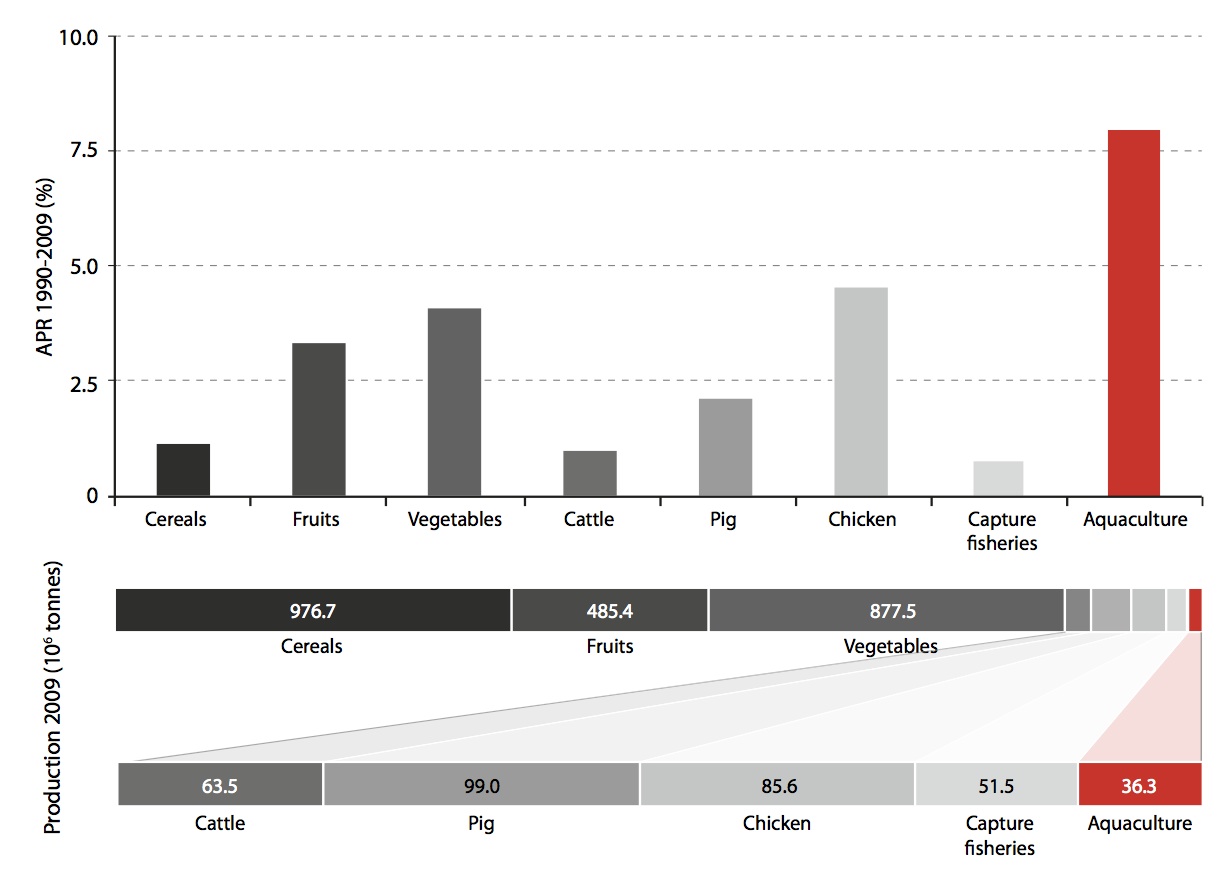
Aquaculture has therefore a potentially very important part in the global food security, particularly for protein. However, aquaculture is heavily reliant on external support systems for feed, water, waste and area. In fact, most feed used in cultivating fish and shrimp, are taken from other food sources, such as grain, oil and wild fish. Freshwater fish comprise the majority of aquaculture production today and thus also compete for freshwater resources and in many regions, for agricultural land.
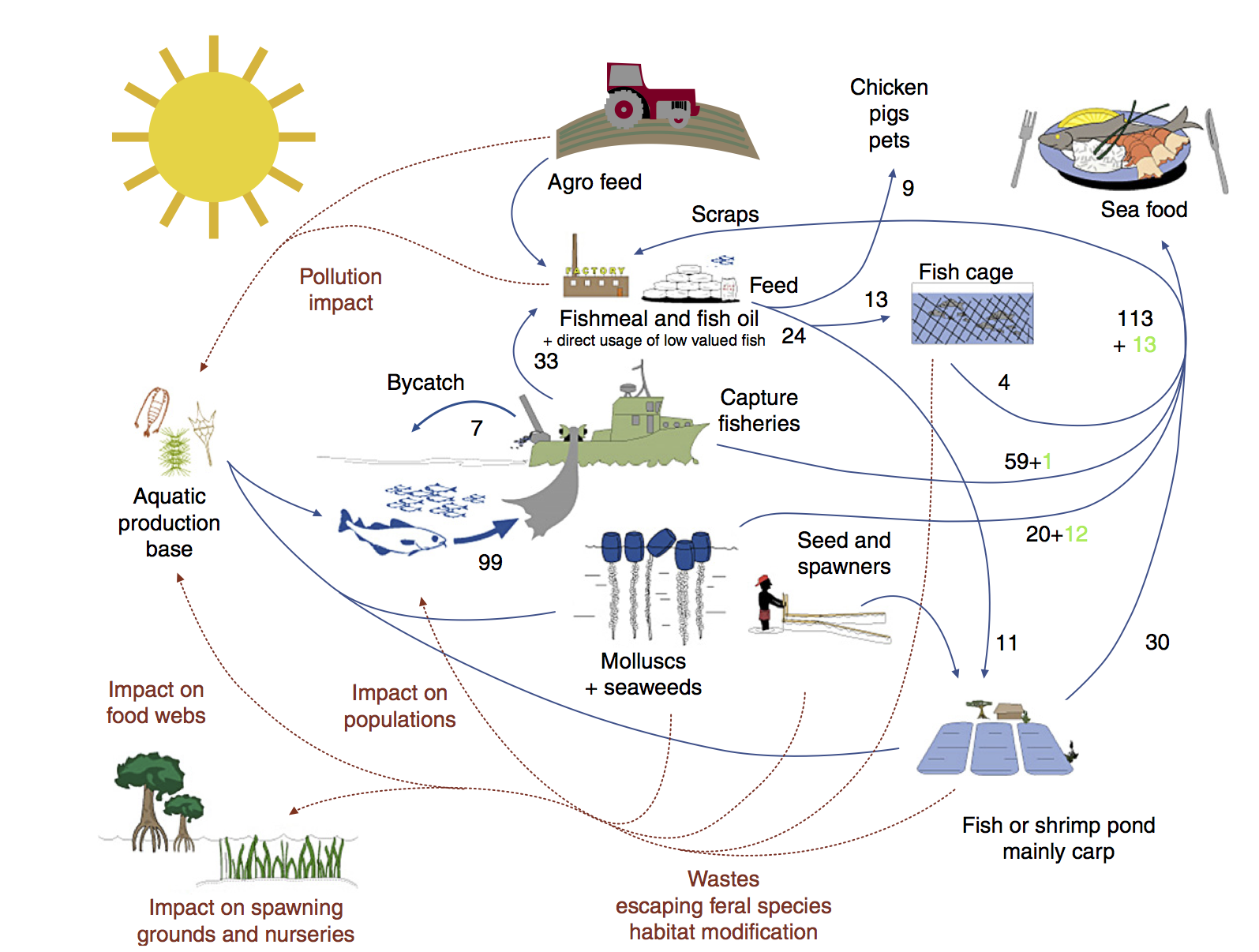
Shrimp farming systems
Shrimp farming, in particular, has received much criticism for its lack of sustainability and huge impact on the surrounding landscape. In addition, shrimp farming is highly intensive, technologically advanced and needs large investments making it only an option for the higher income class. Policies often fail to correct social and economic inadequacies preventing the participation of local community to benefit from substantial profits that strongly rely on the shared support systems needed to maintain shrimp farms. The productivity and sustainability of fish and shrimp aquaculture often is directly dependent on the support of mangrove goods such as fry and broodstock as well as services including water quality maintenance and erosion control (ref). The industry thus challenges its own life-support system. It has been estimated that the spatial mangrove ecosystem support, or “ecological footprint”, required to produce food inputs, nursery areas and clean water, as well as to process wastes, was up to 160 times the surface area of a semi-intensive shrimp farm.
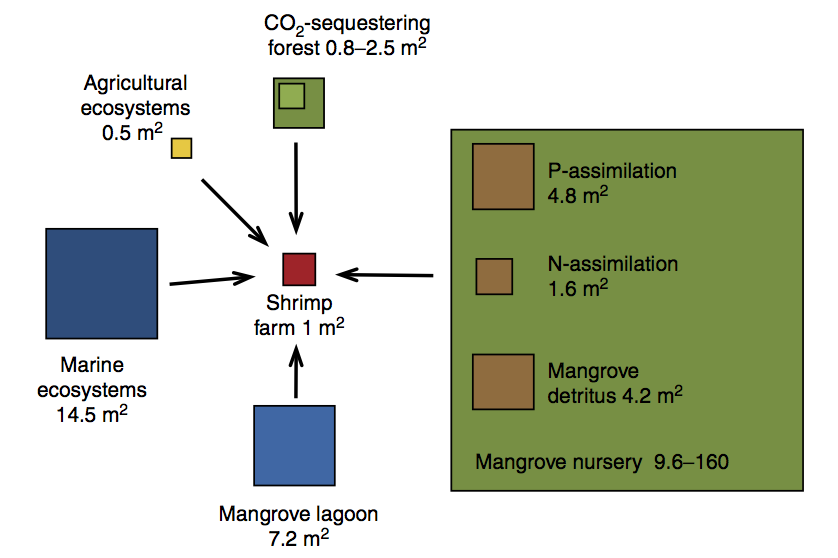
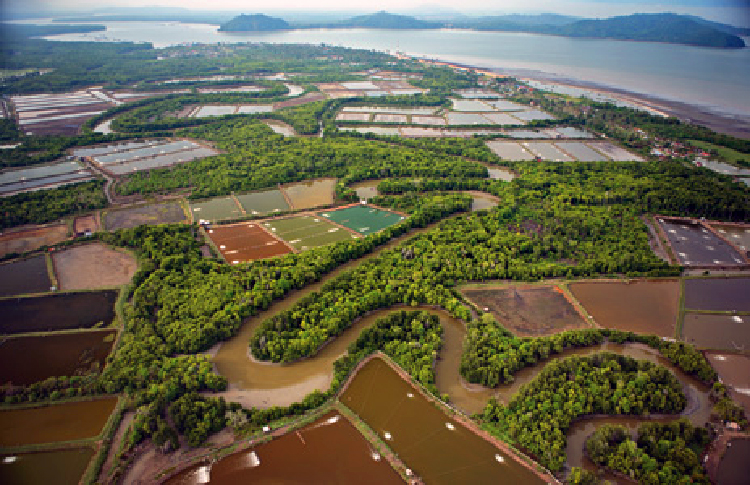
Feeding the poor
Economic incentives from governments, such as cheap land lease, credit supply and low tariffs on imported inputs often tends to benefit the richer entrepreneurs. They have the means, access to the knowhow and connection to trade in foreign markets to target high value markets such as urban areas or exports, resulting in a net flow of income away from the poor.
The greatest influence on access to food is prices, which are largely determined by markets and incomes. The consumption of meat and fish, which are expensive compared to starchy staples such as rice or maize, is highly linked to wealth (Speedy, 2003). Low-income consumers therefore preferentially purchase less expensive fishes, such as small pelagic species, high in LCPUFAs (Tacon & Metian, 2009; Kabahenda et al., 2012). In southern Africa, for example, the cheapest fishes are the universally available, small, dried kapenta Limnothrissa sp. and other associated freshwater pelagic species. Quantities as little as a few tens of grams are purchased and used with vegetables to prepare relishes that accompany the staple maize porridge.
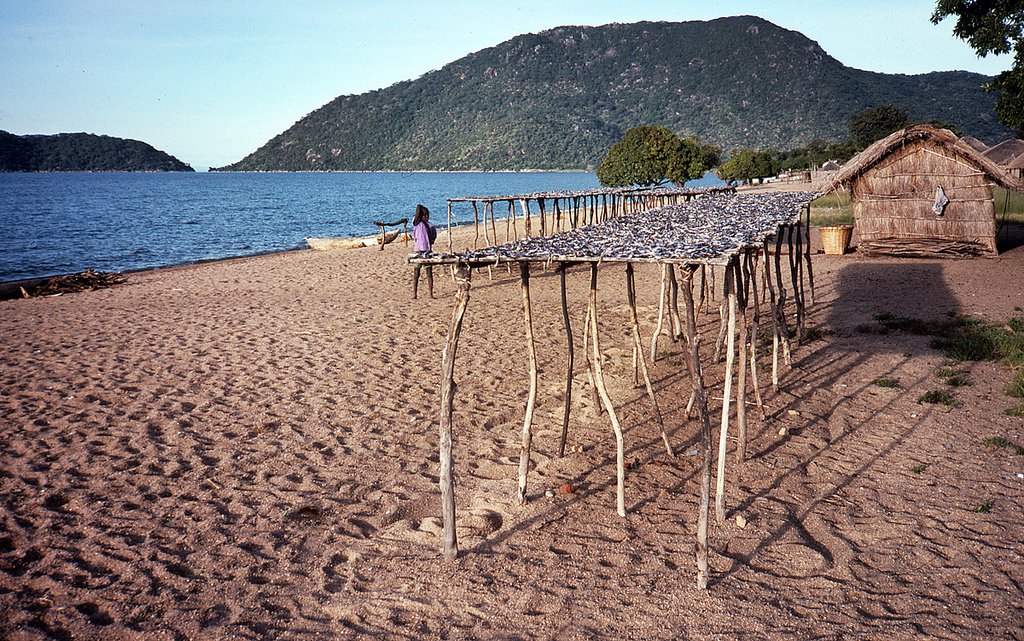
A review of studies of fish price elasticities of demand in western markets concluded that demand responds closely to price (Gallet, 2009). In developing countries, price is likely to be an even greater determinant of whether poor consumers buy fish or not. Where aquaculture production dominates the market, farmed fish tends to be cheaper, increasing economic access. In Egypt, for example, farmed fish now account for two-thirds of all fish consumed and is considerably less expensive than most wild-caught fish (GAFRD, 2010). In Bangladesh, a decade ago, farmed fish was more expensive than wild-caught fish (Thompson et al., 2002). Today, due to a doubling of farmed-fish production, however, farmed fish is generally less expensive than wild-caught fish (B. Belton, pers. comm.).
While production of smaller, less expensive fish undoubtedly increases access of poor consumers, from a food and nutrition security perspective the point is not how much fish is eaten but that fish consumption fulfils its potential to help meet nutritional needs, especially of poor and vulnerable consumers. The most important role that fish plays in diets dominated by starchy staples is the provision of essential fatty acids and highly bioavailable micronutrients (Gibson et al., 2003; Roos et al., 2003, 2007a, b, c, d; Hambraeus, 2009; Kawarazuka & Be ́ne ́, 2010, 2011). From this perspective, oily fishes and small fishes that are eaten whole are superior. Small fish species, however, are generally not farmed, an exception being in Bangladesh, where small species, e.g. mola Amblypharyngodon mola (Hamilton 1822) and chanda Parambassis baculis (Hamilton 1822), are allowed to enter fresh- water fish ponds from adjacent water bodies (Roos et al., 2002).
Contributors
Max Troell, Jon Norberg, Elin Enfors
References
Rist, L., Felton, A., Nyström, M., & Troell, M. (2014). Applying resilience thinking to production ecosystems. Ecosphere. Retrieved from http://www.esajournals.org/doi/abs/10.1890/ES13-00330.1
Ahmed, M., & Lorica, M. H. (2002). Improving developing country food security through aquaculture development—lessons from Asia. Food Policy, 27(2), 125–141. doi:10.1016/S0306-9192(02)00007-6
Troell, M., Hecht, T., Beveridge, M., Stead, S., Bryceson, I., Kautsky, N., Ollevier, F., Mmochi, A. (eds.) (2011) Mariculture in the WIO region - Challenges and Prospects. WIOMSA Book Series No. 11. viii + 59pp.
Troell, M. Kautsky, N. Beveridge, N. Henriksson, P. Primavera, J. Ronnback, P. Folke, C. (2013) Aquaculture. In: Levin, S. A. (ed.) Encyclopedia of Biodiversity 2nd Edition, Elsevier, New York, 2013.
Beveridge, M., & Thilsted, S. (2013). Meeting the food and nutrition needs of the poor: the role of fish and the opportunities and challenges emerging from the rise of aquaculturea. Journal of Fish …. Retrieved from http://onlinelibrary.wiley.com/doi/10.1111/jfb.12187/full
Leave a Comment